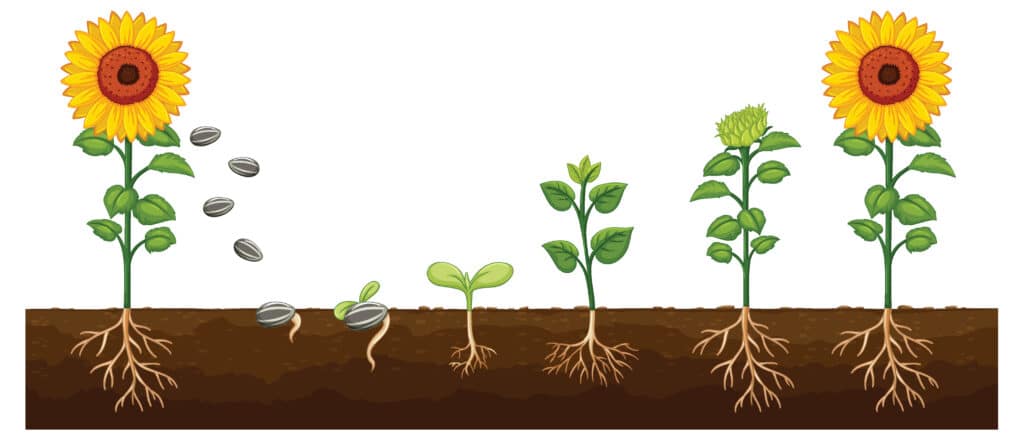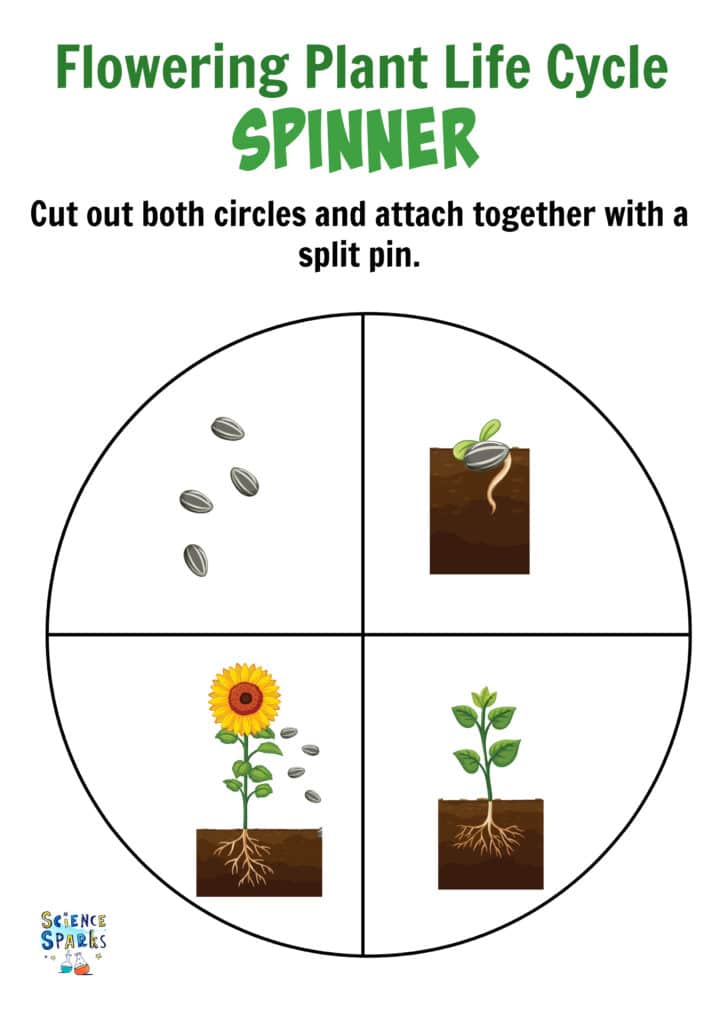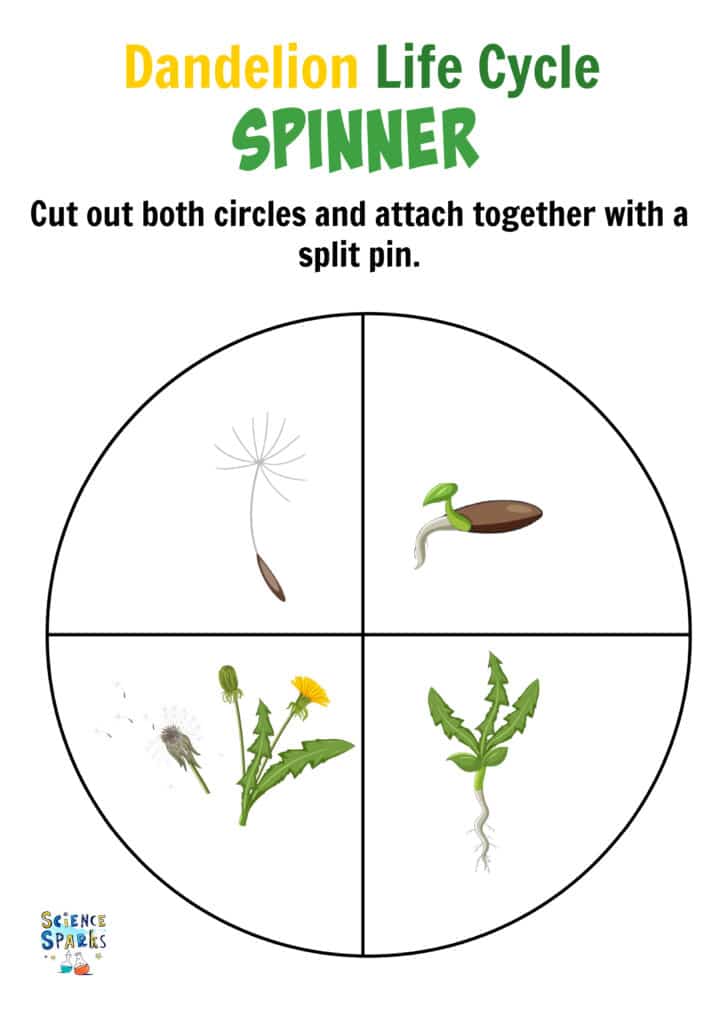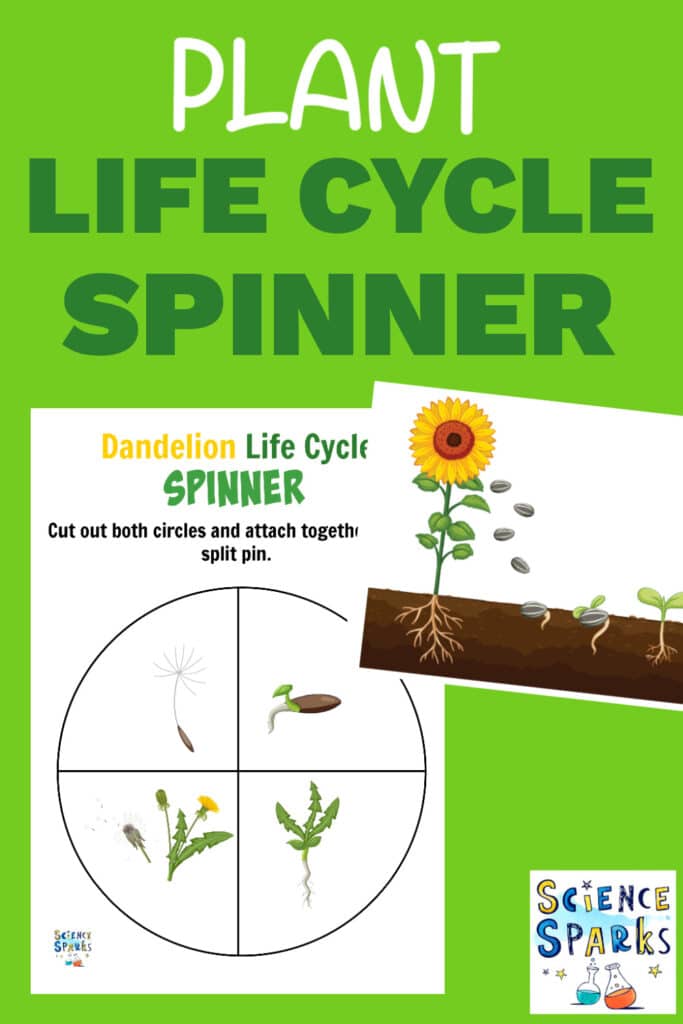This paper plate spinner is an easy and fun way to demonstrate the life cycle of a flowering plant.
Paper plates work really well for creating spinners, but I’ve also created a handy template you can print to make it even easier.
For older children, you can extend the activity by adding in extra stages, such as pollination and photosynthesis.
Life cycle of a plant plate spinner
What you’ll need:
- Felt tip pens
- 2 paper plates or my template
- Scissors
- Split pin

How to make a plant life cycle paper plate spinner
First, you need to divide each paper plate into four sections.
On one plate, draw part of a plant life cycle in each section in the correct order.
Next, cut out one section of the second plate.
Place the second plate on top of the first and attach a split pin in the centre. Try turning the top plate to reveal each stage of the plant life cycle.
Or print one of my templates onto paper or cardstock and use that instead!


Flowering Plant Facts
Petal
The petal is often brightly coloured and scented to attract insects.
Leaf
Leaves use energy from sunlight to make food for the plant.
Root
The root carries water and nutrients from the soil to the plant and keeps it safely anchored in the ground.
What is inside a flower?
Did you know flowers have both male and female parts? You can see these by dissecting a flower like a lily.
Pollen is held on the male part of a flower and looks like a yellow or orange powder. When an insect lands on a flower, pollen sticks to its body. If the insect then lands on another flower, the pollen is transferred to the female part of the second flower. This is called pollination.
More plant life cycle ideas
Add some text to each part of the life cycle, giving more information.
Try creating a life cycle for another type of plant, for example, a bean plant or dandelion. You could include a drawing of the specific flowers and seeds seen on each plant.
Make a plate spinner for an animal life cycle.
A Dab of Glue has a gorgeous plant life cycle printable.
Grow a bean in a jar. This is a great way to learn about germination.
Discover all the things plants need to grow.
Science Concepts
Plant life cycle
Germination

Last Updated on February 26, 2024 by Emma Vanstone

Leave a Reply